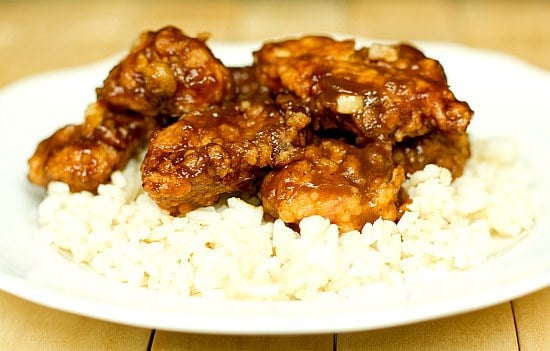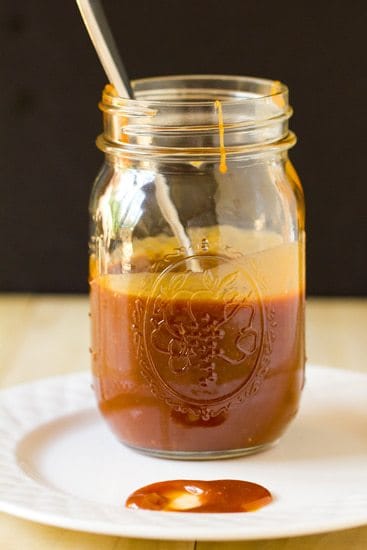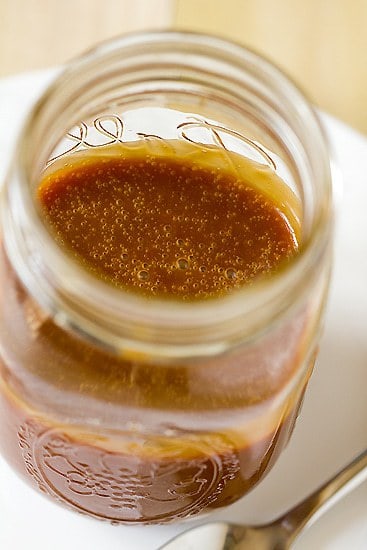
It wasn’t until the last few years that I really have started to embrace Asian cuisine. I’ve had a lot of firsts, including sushi, and the different flavors and dishes have definitely grown on me. Most college kids rely on Chinese take out to get them through cram sessions and heartache, but I was always more of a pizza girl. I leaned on Domino’s. I, of course, had tried Chinese before, but was never crazy about it. All of that changed when I started spending time at my Chief Culinary Consultant’s. When he first mentioned ordering Chinese and I said that I hadn’t ever found something I really liked, he said I had to get General Tso’s, and that I would love it. He knows me all too well, because I absolutely adored it. Between the crunchy, battered chicken, the thick sauce, and the generous amount of spice, I was completely smitten. It soon became my favorite take out option, and I found myself craving it. We had talked about trying to make it at home, but until now I hadn’t found a recipe that I thought sounded authentic enough. I’m thrilled to have found this one; I think we might be cooking in Chinese more often than we order it out now!

I was most worried about the chicken breading having that characteristic thick, crunchy coating that is so typical of General Tso’s. That was definitely achieved, thanks to including just a little bit of the marinade in the dry batter ingredients. Genius! Everything else came together perfectly. As I cooked the sauce, I couldn’t believe how absolutely identical it smelled to the General Tso’s sauce I have come to know and love. Once everything was finished and we dug in, we hardly spoke a word, except to grunt and groan about how phenomenal the food was. And how much it really did taste like General Tso’s. Easily one of the best dinners I’ve made in the last year or so. Top 3, for sure. It’s going into the permanent rotation and very likely will replace many a take out meal for us.
GENERAL TSO'S CHICKEN
INGREDIENTS:
For the Marinade & Sauce:
½ cup hoisin sauce
¼ cup white vinegar
3 tablespoons soy sauce
3 tablespoons sugar
2 tablespoons cornstarch
1½ cups water
4 boneless, skinless chicken breasts (about 1½ pounds), cut into 1-inch pieces
1 tablespoon vegetable oil
4 garlic cloves, minced
2 tablespoons grated fresh ginger
½ teaspoon crushed red pepper flakesFor Coating & Frying:
3 egg whites
1½ cups cornstarch
½ cup all-purpose flour
½ teaspoon baking soda
4 cups vegetable oil
1-2 green onions, thinly sliced (optional, garnish)DIRECTIONS:
1. To make the marinade, whisk the hoisin sauce, vinegar, soy sauce, sugar, cornstarch, and water in a bowl. Of this mixture, place 6 tablespoons into a zip lock storage bag and add the chicken; seal and refrigerate for at least 30 minutes. Set aside the remaining marinade in the bowl.2. While the chicken is chilling in the marinade, heat the 1 tablespoon of vegetable oil in a large skillet over medium heat until shimmering. Sauté the garlic, ginger and red pepper flakes until fragrant. Add 2 cups of the hoisin marinade to the skillet and simmer, whisking constantly, until the mixture is dark brown and thickened. Remove from heat, cover and keep the sauce warm.3. To prepare the chicken for coating and frying, whisk the egg whites in a shallow dish until foamy; set aside. Combine the cornstarch, flour, baking soda, and remaining hoisin marinade in a second shallow dish; mix until it resembles coarse meal.4. Remove the chicken from the refrigerator and from the marinade. Pat the marinated chicken dry with paper towels. Toss half the chicken into the foamy egg whites until well coated, then dredge the chicken in the cornstarch mixture, pressing to adhere. Transfer the coated chicken to a plate and repeat with the remaining chicken.5. Heat the oil in a Dutch oven over medium high heat until the oil registers 350 degrees. Fry half the chicken until golden brown, about 3 minutes, turning each piece halfway through cooking. Transfer the cooked chicken onto a paper towel lined plate to drain. Return the oil to 350 degrees before frying again. Repeat with the remaining chicken.6. Warm the sauce over medium heat until simmering. Turn off the heat and add the fried chicken pieces. Toss to coat and serve.









